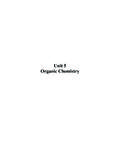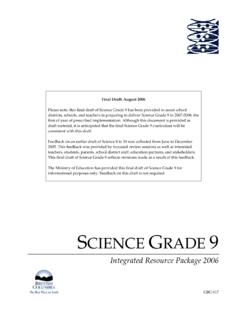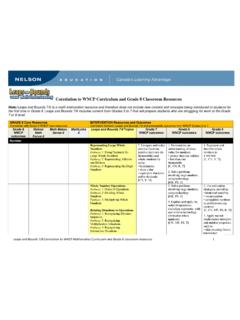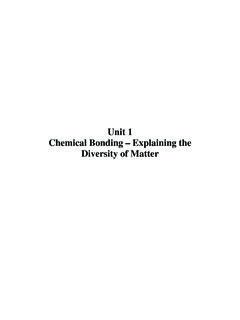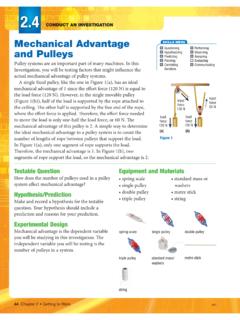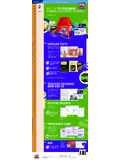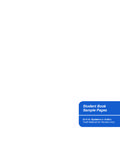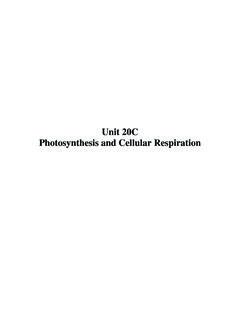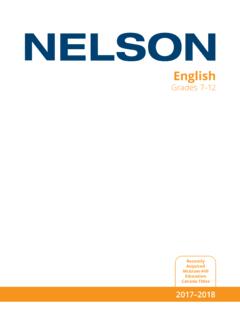Transcription of OWA - Nelson
1 OWA. er Ontario Writing Assessment pl 6. m Authors: Steven Reid Mary Reid Contributor: Heather McGowan Sa Foreword by: David Booth Advisory Panel: Gwen Babcock, Teacher, Limestone District School Board Roz Doctorow, Educational Consultant Jill Foster, English Facilitator, Durham District School Board Michelle Haddad, Elementary Instructional Resource Teacher, Peel District School Board Colleen Hayward, Language Arts Resource Teacher, Toronto Catholic District School Board Lee Jones-Imhotep, Literacy Coordinator, Toronto District School Board Maureen Mancini, Teacher, Ottawa-Carleton Catholic District School Board Kelly Rilley, Board Literacy Teacher, Windsor-Essex Catholic District School Board Ann Varty, Program Consultant, Trillium Lakelands District School Board Table of Contents * Italic font indicates a reproducible Foreword.
2 V An Introduction to Ontario Writing Assessment (OWA).. 1. Why does OWA provide on-demand Writing Tasks? .. 1. Why is OWA an effective writing assessment tool? .. 2. How was OWA developed and validated?.. 2. What are OWA's criteria for assessment? .. 2. How will OWA help you with assessment and ongoing instruction? .. 3. Can OWA be used with other assessment practices? .. 4. er How does using OWA across one grade or throughout a school benefit students, teachers, and school leaders? .. 5. Case Study: Mountaintop Public School.. 5. OWA Components .. 8. OWA Writing Tasks.. 11. pl When do you administer the Writing Tasks? .. 11. Why is each Writing Task designated a specific text form, genre, and format? .. 12. How do the Writing Tasks and the Writing Self-Assessment questionnaire correspond to the expectations of The Ontario Curriculum, Grades 1 8: Language (2006)?
3 14. Administering the OWA Writing Tasks .. 15. assessing the OWA Writing Tasks .. 15. m Accommodations for Special Education and ESL Students .. 19. Example of the OWA Scoring Process .. 20. OWA Across the Grades .. 22. Writing Task 1 Start of Year .. 23. Writing Rubric 1.. 24. Writing Task 1.. 26. Sa Writing Task 1 Anchors and Rationales .. 29. Writing Task 2 Mid-Year .. 45. Writing Rubric 2.. 46. Writing Task 2.. 48. Writing Task 2 Anchors and Rationales .. 51. Writing Task 3 End of Year .. 67. Writing Rubric 3.. 68. Writing Task 3.. 70. Writing Task 3 Anchors and Rationales .. 73. Ontario Writing Assessment Class Tracking Sheet.. 89. OWA Overall Level Guide.. 90. Student Writing Self-Assessment .. 91. Writing Self-Assessment .. 92. Student Writing Attitude Survey .. 93. Writing Attitude Survey.
4 94. NEL Ontario Writing Assessment 6 iii How OWA Can Help Your Writing Program Succeed .. 97. What constitutes an effective writing program?.. 97. Why is assessment crucial to an effective writing program? .. 97. How does OWA help your writing program succeed? .. 97. What tools can you use with OWA to assess writing performance? .. 97. Elements of an Effective Writing Program .. 98. What are the key instructional elements of an effective writing program? .. 98. How do you use the four key instructional elements? .. 98. How do you decide which of the four instructional elements to use, and when? .. 99. How do you move students from supported writing and reading toward independent practice? .. 99. What are other elements of an effective writing program? .. 100. How can you use process writing and on-demand writing strategies?
5 100. er How can you teach spelling and word study effectively? .. 102. How can you use your classroom resources to support student writing? .. 103. Next Steps for Teaching Writing .. 105. Why is the writing conference an essential teaching strategy? .. 105. What other key writing strategies target writing skills? .. 105. How else can you plan and incorporate next steps for teaching? .. 105. pl Planning Guide: OWA Instructional Next Steps .. 108. Instructional Writing Strategies.. 110. Next Steps for Leadership .. 131. How can OWA on-demand Writing Tasks be used to improve school achievement? .. 131. How can OWA results be used by a school to guide professional development? .. 133. How can OWA be used in the teacher moderation process? .. 133. m How can OWA results be used by a school to improve student achievement?
6 133. Case Study: Applegate Public School .. 134. References .. 137. Additional Resources .. 137. Sa iv Ontario Writing Assessment 6 NEL. An Introduction to Ontario Writing Assessment (OWA). The skillful use of classroom data allows us to identify strengths and weaknesses in student learning, monitor student progress toward specified goals, make adjustments in instruction, measure the degree to which students meet standards, and distinguish effective from ineffective instructional practice. Without data, instruction becomes a series of well-intentioned but essentially random acts of teaching.. ~FOX 2001. er Learning how to become an effective writer is a highly complex process. Writing involves using a wide range of skills and tasks to construct meaningful messages for various audiences and purposes.
7 As a teacher, you require an understanding of each student's strengths and gaps in writing skills in order to plan and implement a targeted pl writing program. When you are able to provide explicit instructional strategies based on this assessment, you help students develop the skills necessary to become effective writers for a variety of audiences and purposes. Ontario Writing Assessment has been developed to assist you in achieving these goals. m Why does OWA provide on-demand Writing Tasks? OWA helps you to gather the information about students' skills that you An effective writing program need in order to plan effective writing instruction. OWA provides on- includes both on-demand and demand Writing Tasks that are specific to each grade level, from Senior process writing opportunities.
8 Kindergarten to Grade 8. They provide students with opportunities to Most of us seldom publish our Sa writing; on-demand writing is write independently for an intended purpose and audience. what we typically do every By completing these Writing Tasks, students demonstrate their ability to day in e-mails, letters, and meet the overall expectations of The Ontario Curriculum, Grades 1 8: other work- and school- Language (2006), which include the following: related writing. The OWA. on-demand Writing Tasks are generate, gather, and organize ideas and information completed by the student independently, which is use a variety of literary and graphic forms and stylistic elements consistent with the revised use editing and proofreading skills and strategies, and knowledge of Ontario Achievement Chart language conventions, to correct errors, refine expression, and present (2006).
9 Their work effectively reflect on and identify their strengths as writers, and areas for improvement NEL Ontario Writing Assessment 6 1. Why is OWA an effective writing assessment tool? OWA is a consistent writing assessment tool that can be used by all teachers new and experienced in assessing the OWA on-demand Writing Tasks, as well as the many other pieces of writing that students create for various purposes during the year. OWA helps you build on your understanding of how to level student work in line with the revised Ontario Achievement Chart (2006), and more easily make confident decisions when analyzing and assessing students' writing. OWA supports you in your analysis of students' strengths and needs, allowing you to help students improve their skills. This common assessment tool facilitates your professional sharing with other teachers in your school or across schools by providing a common understanding of what student work looks like at various levels of achievement.
10 Er How was OWA developed and validated? OWA has been developed OWA was developed in response to an identified need for a common for students in Senior writing assessment tool for use across Ontario. The following validation Kindergarten and Grades 1 strategies were used to ensure that OWA is both a valid and a reliable through 8. assessment tool: pl An eight-member OWA Advisory Team consisting of classroom teachers, school administrators, system curriculum leaders, and district leaders was formed. This Advisory Team reviewed and commented on the program construct, structure, and all content, including the on-demand Writing Tasks, task-specific Rubrics, Anchors, and Rationales. m During the 2006 2007 school year, the OWA Writing Tasks were field-tested in a number of school districts across Ontario.

